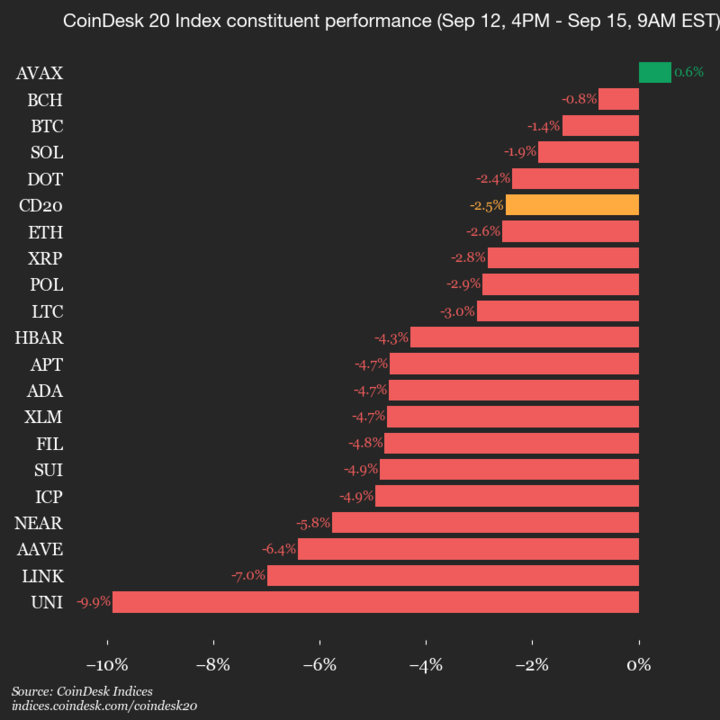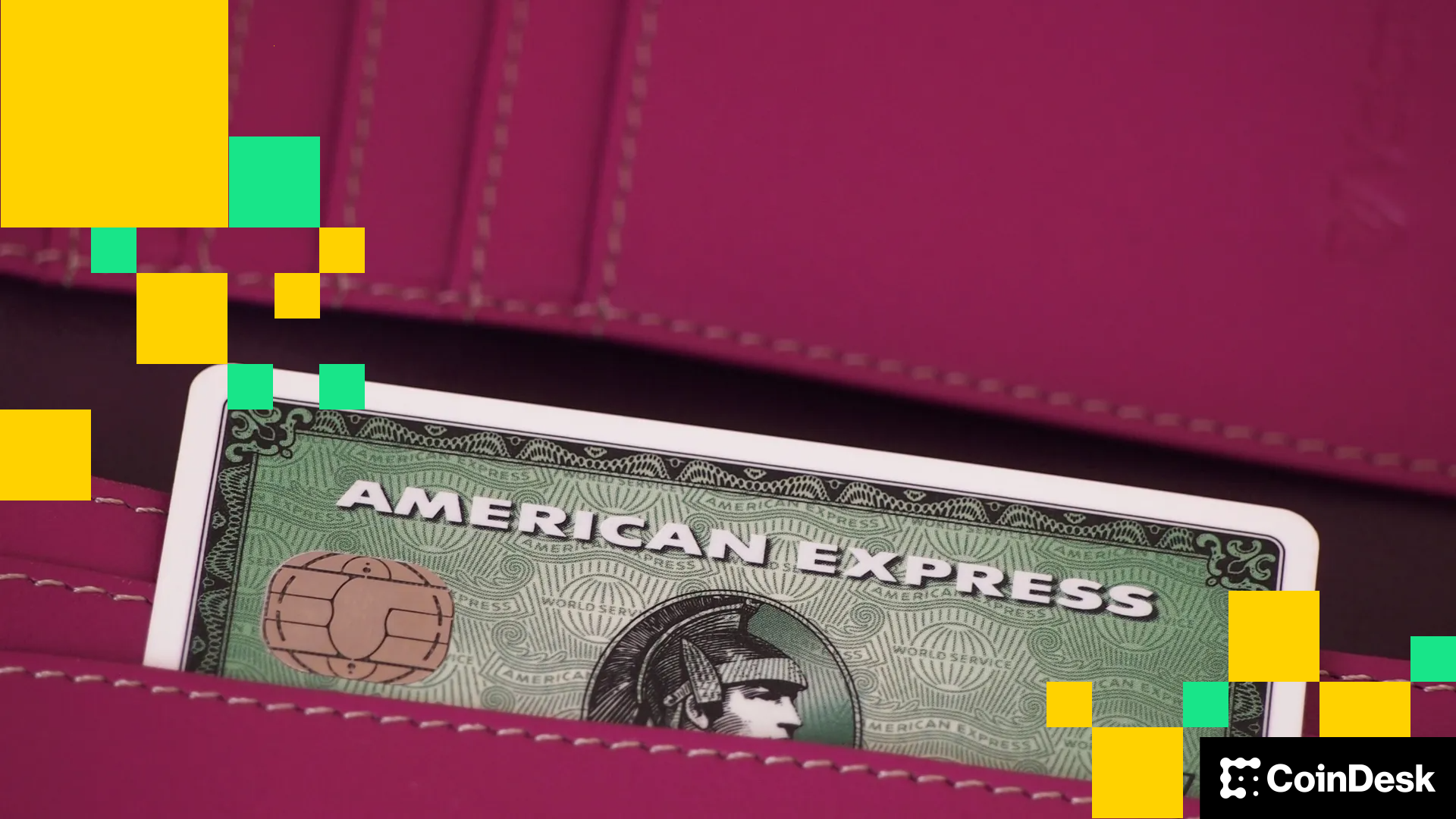Uncategorized
What’s Better Than CEX? DEX

When it comes to trading memecoins, time is money — and waiting on a centralized exchange (CEX) could cost you both. Take $TRUMP, for example. On Jan. 17, 2025, just before his inauguration, Donald Trump launched his memecoin on Solana, which surged past a $14.5 billion peak market cap on decentralized exchanges (DEXs) like Raydium and Orca within little more than 24 hours, making it the second largest memecoin behind Dogecoin at one point.
By the time the major CEXs listed $TRUMP a day or two later — having cleared the usual bureaucratic rigmarole — the action was over. As such, for speculators, DEXs aren’t just faster; they’re more liquid, more volatile and frankly, more fun. In a market where fortunes are made in minutes if not milliseconds, waiting for a CEX to catch up is a missed opportunity.
On the Monday morning following $TRUMP memecoin mania, I spoke with Bobby Ong, co-founder of CoinGecko, the independent crypto data aggregator that has long been my personal go-to for checking token prices — along with roughly 40 million other monthly visitors, according to HypeStat.com. Founded in 2014, CoinGecko has grown into one the most trusted sources for crypto market data.
Ong and I had actually scheduled the call before Christmas, so it was pure coincidence that Trump just happened to launch his memecoin a few days earlier. When we spoke, we both had the same reaction: What the hell just happened?
This series is brought to you by Consensus Hong Kong. Come and experience the most influential event in Web3 and Digital Assets, Feb.18-20. Register today and save 15% with the code CoinDesk15.
I’ve known Bobby for years—he’s a true OG, having first bought bitcoin in 2013, and is one of the sharpest observers of how trading habits evolve at the grassroots level. When he started CoinGecko, it was to solve his own problem — back then, crypto price tracking was rudimentary, and there wasn’t a way to analyze market depth, liquidity, developer activity or community engagement. He wanted better insights, so he and his co-founder built the tool themselves.
Ong is based in Malaysia, while I’m in the Philippines, so we’ve both spent years in Asia’s crypto scene, watching firsthand how the region has shaped — and been shaped by — crypto. With Consensus Hong Kong coming up and both of us slated to be speakers, we planned to discuss crypto adoption trends in Asia. But we ended up talking about the problems with CEX.
DEX appeal
For CEX users, waking up on Monday was a brutal realization: they’d already missed out on nearly 41,000% in potential gains. This was particularly gut wrenching since it wasn’t just another obscure memecoin popping off in some niche corner of the internet; it was a headline-dominating asset tied to the newly re-elected U.S. president, and still, CEXs couldn’t move fast enough.
Meanwhile, in just 72 hours, Solana’s DEX users recorded an unprecedented $28 billion in trading volume, largely driven by $TRUMP and the fast-following $MELANIA token. This level of DeFi engagement was unimaginable barely a few years ago, when DEXs were considered too complex for the average trader to use. But that’s no longer the case, which suggests that DeFi isn’t just an alternative to CEXs; it might just overtake them.
“The experience with decentralized exchanges is superior compared to centralized exchanges, and people gravitate to that — that’s what I’m seeing in the market right now,” Ong told me.
How times have changed
Back in 2020, CoinGecko’s Yearly Crypto Report showed that while combined CEX and DEX trading volumes surged by $403 billion to $534 billion, CEXs accounted for 93% of that growth. Fast-forward to 2024 and that same annual report revealed that the top 10 spot DEXs had done $1.76 trillion in volume all on their own. Additionally, in Q4 of 2024, Solana overtook Ethereum for the first time as the dominant chain, reaching $219.2 billion in DEX trading volume, or over 30% of all DEX trades, compared to Ethereum’s $184.3 billion.
Particularly with Solana, the ecosystem has been built with a strong emphasis on mobile applications. Wallets like Phantom and Jupiter are designed to be user-friendly for mobile trading, which is critical since most people today trade primarily through mobile apps. Ong noted that the user experience for mobile wallets has improved significantly, which in turn has enhanced the overall on-chain experience.
«Previously, we only had MetaMask on desktop, and while there was a MetaMask mobile wallet, it wasn’t very user-friendly,” he said. “But if you look at Ethereum now, you’re seeing a shift — Uniswap has its own mobile app, [non-custodial] Coinbase Wallet has improved and there are many others like Rainbow. The overall wallet experience has gotten much better compared to before, when MetaMask was one of the only options.»
Ong also noted the friction involved in getting new users on-chain, but pointed out that once onboarded, they learn the ropes, enabling them to navigate the ecosystem independently. This means that future projects don’t have to spend as much time and effort onboarding.
I recalled writing about Axie Infinity back in 2020 and how difficult it was for players to earn Axie’s in-game token, then sync and swap it to Ethereum and then trade it on Uniswap — it was an incredibly complicated, multi-step process. But once people overcame those initial hurdles, the next wave of projects could build on that foundation, benefiting from an already-educated user base. Over time, the challenge shifted from onboarding noobs to refining the experience and expanding what’s possible on-chain.
Caught between regulators and a hard place
As DeFi becomes more user friendly, and users get friendlier with DeFi, Ong told me he sees these developments as an existential threat to the CEX business. He likened the CEXs to a big supermarket with spot and futures, staking and all the things you could ever need all in one convenient place. But with all that being unbundled by DeFi, which can now be accessed via the main interface of a DEX in a user’s mobile wallet, the CEXs must figure out where they’re going to sit.
That’s especially the case for CEXs that operate in jurisdictions where they lack full regulatory approval, like Binance, OKX and ByBit, since they can neither onboard shitcoins instantly like a smart contract-based non-custodial DEX — where tokens become tradable as soon as liquidity is added — nor offer fiat on/off ramps like a licensed CEX.
This leaves them grasping at straws, desperate to maintain relevance. Ong gave an example: Binance has always allowed the trading of high-risk assets but its recent listing of speculative AI tokens such as ChainGPT (CGPT) and Cookie DAO (COOKIE), as well as emerging AI-driven projects such as aixbt by Virtuals (AIXBT), suggests a shift to cater to hype-driven, short-term trading. Some critics have called this out as a departure from Binance’s traditionally selective standards and a move to chase trading volume amid rising DEX competition.
“They sort of have no choice because if people are trading those tokens on their own wallets on Metamask, or Aerodrome on Base, then they are not trading on Binance,” said Ong.
Meanwhile, Binance’s regulatory troubles have been mounting. In mine and Bobby’s home region, countries including Singapore, Malaysia, Thailand, the Philippines and Indonesia all have clear licensing requirements for crypto exchanges, with Vietnam expected to join them this year. Obviously, the level of regulation varies between these countries, with some being more relaxed and some more strict, but the point is, it’s no longer a gray area.
This leaves a jurisdictionally fluid CEX like Binance in the precarious position of operating in regulatory limbo, constantly facing restrictions, bans or forced exits from key markets. By contrast, DEXs have no central entity to regulate them. Without a company or headquarters to license or restrict, they exist purely as smart contracts on a blockchain, allowing them to facilitate trading without the same compliance burdens that weigh down CEXs.
“Do you know of any country that’s getting anywhere close to regulating DeFi?” I asked. “No,” said Bobby, mentally chalking up another win for DEXs.
Why DEXs are dominating in Asia now
Southeast Asia is home to a huge population of tech-savvy youngsters eager to explore new financial opportunities but (with the exception of Singapore) the region offers limited options for high-yield investments. Unlike in the U.S., where retail investors enjoyed 23%-plus returns in the S&P 500 in both 2023 and 2024, people in the East face significant barriers to accessing such markets — for context, we don’t have any local equivalent where retail investors can cheaply and easily trade stocks via platforms like Robinhood. Most equity trading platforms in Southeast Asian markets have high barriers to entry —steep fees, lack of fractional shares, strict regulations and limited access to global equities. Instead, crypto has filled the gap.
Where else can you see a token like $TRUMP explode from $7 to $75 in not much more than the space of a weekend? And while the crypto industry tries to shake its reputation for speculation, that speculative allure is exactly what keeps people coming in.
These markets matter to exchanges — CEXs, DEXs and everything in between — because countries with large populations like India, Indonesia, Vietnam and the Philippines are prime hunting grounds for user acquisition. These regions offer immense scale, but the challenge lies in the spending power of these users.
GDP per capita is relatively low, and many individuals lack significant disposable income so they engage with crypto in mostly transactional ways, hunting airdrops for survival. Earning $50 to $100 from an airdrop isn’t a bonus for many people living in these countries — it can be rent, food or a full month’s wages. However, while this drives engagement, the participation is often temporary and driven by immediate financial needs rather than long-term investment or platform affinity.
“A lot of them are just there to make money. They’re not even interested in decentralization or the technology. It’s really just about the financial returns for many of them,” said Ong. And while CEXs serve this audience well for on/off ramps, for those seeking the highest rewards, DEXs are where the stakes — and the upside — are highest.
As such, today’s degens aren’t necessarily ideologically-driven like the early Bitcoiners who championed “don’t tread on me” ideals or the ethos of “be your own bank.” They are decentralized for one reason: the money.
And while poor financial literacy and FOMO often lead to losses, I personally don’t believe in shielding people from risk by making these markets inaccessible. High barriers essentially say “You’re poor and uneducated, so you can’t participate,” robbing people of the chance to learn—even if that means making mistakes. Traditional finance does the same thing by restricting startup investments to accredited investors, supposedly for protection, but in reality, just keeping the best opportunities for the wealthy. That, in my view — and in Ong’s too — is fundamentally unfair.
DEXs have the upper hand right now. They offer true, open, unrestricted access to financial opportunity at lightning speed, allowing anyone, anywhere to get in on the game. How long regulators will take to catch up is anyone’s guess, but for now, we make hay while the Crypto Spring sun shines.
And when the next mega memecoin kicks off, all you really need is a wallet, a DEX and the stamina to satisfy a never-ending cycle of checking, hoping and coping on CoinGecko.
Uncategorized
CoinDesk 20 Performance Update: Index Drops 2.5% as Nearly All Constituents Decline

CoinDesk Indices presents its daily market update, highlighting the performance of leaders and laggards in the CoinDesk 20 Index.
The CoinDesk 20 is currently trading at 4248.74, down 2.5% (-109.09) since 4 p.m. ET on Monday.
One of 20 assets is trading higher.

Leaders: AVAX (+0.6%) and BCH (-0.8%).
Laggards: UNI (-9.9%) and LINK (-7.0%).
The CoinDesk 20 is a broad-based index traded on multiple platforms in several regions globally.
Uncategorized
Pantera-Backed Solana Treasury Firm Helius Raises $500M, Stock Soars Over 200%

Helius Medical Technologies (HSDT) announced on Monday it’s raising more than $500 million in a private financing round to create a Solana-focused treasury company.
The vehicle will hold SOL, the native token of the Solana blockchain, as its reserve asset and aims to expand to more than $1.25 billion via stock warrants tied to the deal, the press release said.
The financing was led by Pantera Capital and Summer Capital, with participation from investors including Animoca Brands, FalconX and HashKey Capital.
Shares of the firm rallied over 200% above $24 in pre-market trading following the announcement. Solana was down 4% over the past 24 hours.
The firm is joining the latest wave of new digital asset treasuries, or DATs, with public companies pivoting to raise funds and buy cryptocurrencies like bitcoin (BTC), ether (ETH) or SOL.
Helius is set to rival with the recently launched Forward Industries (FORD) with a $1.65 billion war chest backed by Galaxy Digital and others. That firm confirmed on Monday that has already purchased 6.8 million tokens for roughly $1.58 billion last week.
Helius’ plan is to use Solana’s yield-bearing design to generate income on the holdings, earning staking rewards of around 7% as well as deploying tokens in decentralized finance (DeFi) and lending opportunities. Incoming executive chairman Joseph Chee, founder of Summer Capital and a former UBS banker, will lead the firm’s digital asset strategy alongside Pantera’s Cosmo Jiang and Dan Morehead.
«As a pioneer in the digital asset treasury space, having participated in the formation of the strategy at Twenty One Capital (CEP) with Tether, Softbank and Cantor, Bitmine (BMNR) with Tom Lee and Mozayyx as well as EightCo (OCTO) with Dan Ives and Sam Altman, we have built the expertise to set up the pre-eminent Solana treasury vehicle,» Cosmo Jiang, general partner at Pantera Capital, said in a statement.
«There is a real opportunity to drive the flywheel of creating shareholder value that Michael Saylor has pioneered with Strategy by accelerating Solana adoption,» he added.
Read more: Solana Surges as Galaxy Scoops Up Over $700M Tokens From Exchanges
Uncategorized
American Express Introduces Blockchain-Based ‘Travel Stamps’

American Express has introduced Ethereum-based ‘travel stamps’ to create a commemorative record of travel experiences, as part of the firm’s revamped travel app.
The travel experience tokens, which are technically NFTs (ERC 721 tokens), are minted and stored on Coinbase’s Base network, said Colin Marlowe , VP, Emerging Partnerships at Amex Digital Labs.
The travel stamps, which can be collected anytime a traveler uses their card, are not tradable NTF tokens, Marlowe explained, and neither do they function like blockchain-based loyalty points – at least for the time being.
“It’s a valueless ERC-721, so technically an NFT, but we just didn’t brand it as such. We wanted to speak to it in a way that was natural for the travel experience itself, and so we talk about these things as stamps, and they’re represented as tokens,” Marlowe said in an interview.
“As an identifier and representation of history the stamps could create interesting partnership angles over time. We weren’t trying to sell these or sort of generate any like short term revenue. The angle is to make a travel experience with Amex feel really rich, really different, and kind of set it apart,” he said.
The Amex travel app also includes a range of tools for travels and Centurion Lounge upgrades, the company said.
-

 Business11 месяцев ago
Business11 месяцев ago3 Ways to make your business presentation more relatable
-

 Fashion11 месяцев ago
Fashion11 месяцев agoAccording to Dior Couture, this taboo fashion accessory is back
-

 Entertainment11 месяцев ago
Entertainment11 месяцев ago10 Artists who retired from music and made a comeback
-

 Entertainment11 месяцев ago
Entertainment11 месяцев ago\’Better Call Saul\’ has been renewed for a fourth season
-

 Entertainment11 месяцев ago
Entertainment11 месяцев agoNew Season 8 Walking Dead trailer flashes forward in time
-

 Business11 месяцев ago
Business11 месяцев ago15 Habits that could be hurting your business relationships
-

 Entertainment11 месяцев ago
Entertainment11 месяцев agoMeet Superman\’s grandfather in new trailer for Krypton
-

 Entertainment11 месяцев ago
Entertainment11 месяцев agoDisney\’s live-action Aladdin finally finds its stars





